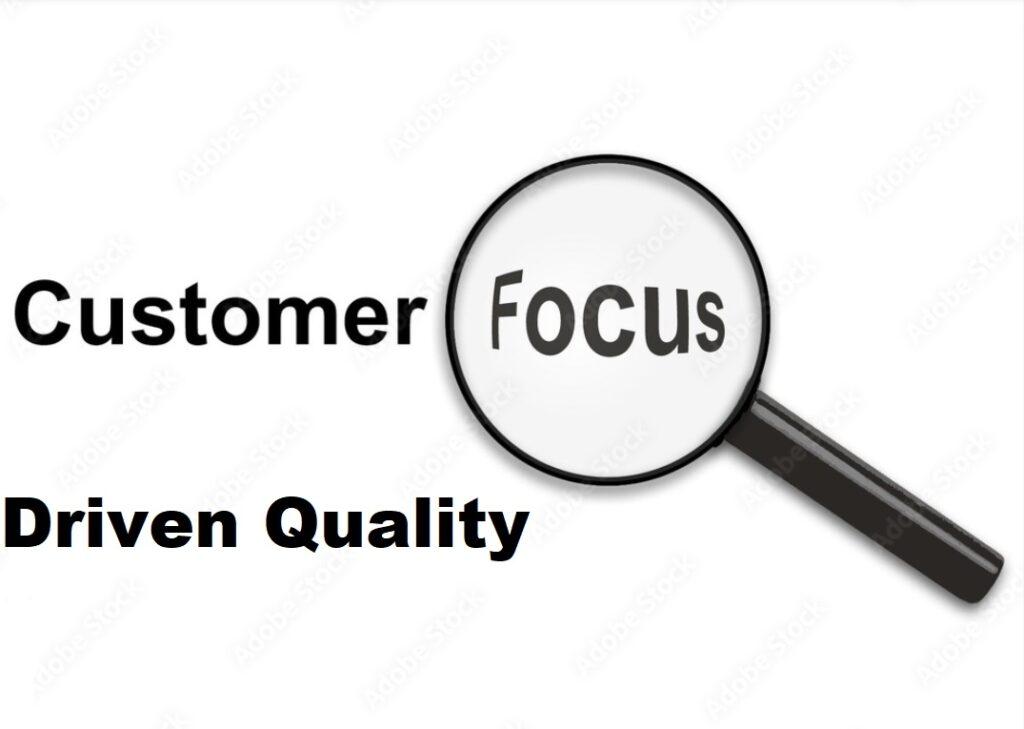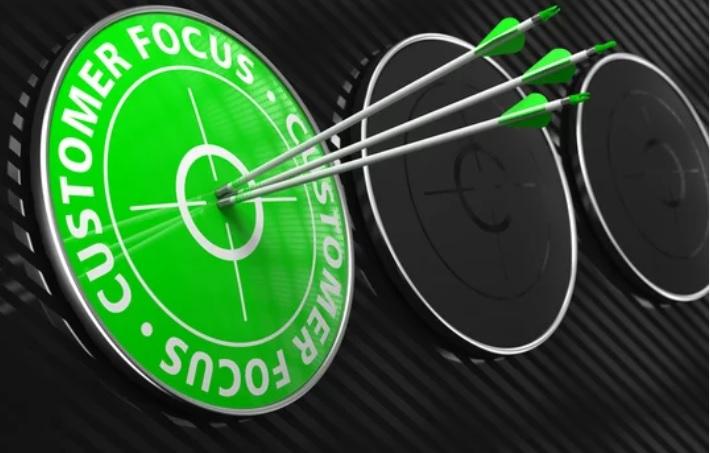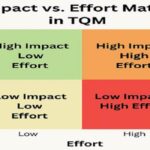What is Customer Driven Quality

Introduction:
In the dynamic landscape of business, achieving and maintaining customer satisfaction is a paramount goal for any organization. The key to success lies in adopting customer-driven quality approaches that not only respond to customer needs but also proactively anticipate them. This article explores the realm of customer-driven quality, shedding light on the two distinct types—reactive and planned—and how they shape the path towards customer satisfaction.
Reactive and Planned Customer-Driven Quality:
Customer-driven quality is a strategic approach that revolves around understanding and interacting with customers effectively. In this pursuit, two approaches have gained prominence: reactive customer-driven quality (RCDQ) and planned customer-driven quality.
A. Reactive Customer-Driven Quality (RCDQ):
RCDQ involves responding to customer requirements after the fact. While it has proven effective in enhancing product quality, it does not guarantee absolute customer satisfaction. It involves addressing customer concerns and suggestions that arise during or after the product’s development and release. However, relying solely on RCDQ can leave an organization lagging the ever-evolving customer expectations.
B. Planned Customer-Driven Quality:
Planned customer-driven quality takes a proactive stance. It involves assessing customer needs well in advance and devising strategies to fulfill those needs before they even arise. This approach requires a deep understanding of customer preferences, behaviours, and market trends. By leveraging strategic quality planning (SQP), organizations can stay ahead of the curve and consistently deliver products and services that align with customer expectations.
Essential Characteristics of Customer-Focused Companies:
To become truly customer-driven, organizations need to embody certain characteristics that prioritize customer experience and satisfaction. Some key traits include:

1) Total Consumer Experience:
Understanding the customer’s perspective from every angle, considering every point of contact to gather real-world insights.
2) Product Hits:
Employing models like the Kano model to surprise and delight customers with innovative products and services.

3) Consumer Loyalty:
Cultivating loyalty to the extent that customers exclusively rely on your offerings.
4) Retailing and Distribution:
Creating a mutually beneficial ecosystem for the organization, distributors, and customers.
5) Brand Process:
Establishing a recognizable and sought-after presence in the market.
6) Logistics:
Providing precisely what the market demands, exactly when and where it’s needed.
7) Build to Demand:
Developing a lean, adaptable process capable of swift adjustments to match customer preferences.
8) Consumer Knowledge System:
Continuously gathering information on customer expectations for ongoing improvement.
9) E-commerce:
Embracing online interactions for distribution, sales, and communication.
10) Growth:
Pursuing constant enhancement, faster service, better value, and innovation to elevate customer satisfaction.
Navigating the Challenges:
While customer-driven quality offers a strategic path to success, challenges persist. It’s impossible to satisfy every customer’s desires or anticipate every change in their preferences. The key challenge lies in effectively gathering and analysing customer feedback to make informed predictions. As technology advances, staying connected with customers becomes easier, but ensuring the reliability of the received information remains a crucial task.
Unlocking the Benefits of Customer-Driven Quality:
Embracing customer-driven quality yields a plethora of benefits for organizations willing to invest the effort:
1) Competitive Edge:
Organizations that consistently meet and exceed customer expectations gain a competitive advantage in the market.
2) Enhanced Reputation:
Positive customer experiences lead to a strong brand reputation and positive word-of-mouth recommendations.
3) Repeat Business:
Satisfied customers are more likely to return, becoming loyal patrons who contribute to sustained revenue.
4) Innovation:
Proactively anticipating customer needs drives innovation, enabling the creation of groundbreaking products and services.
5) Market Expansion:
Customer-driven companies often enjoy increased market share due to their ability to cater to diverse customer segments.
6) Employee Engagement:
Engaged employees feel motivated when their efforts contribute to customer satisfaction, fostering a positive workplace culture.
The Continuous Pursuit of Excellence:
In the pursuit of customer-driven quality, organizations must recognize that customer preferences are not static; they evolve over time. What delighted customers yesterday might not do so today. This dynamic nature requires organizations to continually refine their approaches, harnessing both reactive and planned strategies to remain adaptable and responsive.
In Conclusion:
Customer-driven quality is an ongoing journey that organizations must undertake to remain competitive and relevant in the market. By striking a balance between reactive and planned approaches, companies can not only meet but exceed customer expectations. Embracing customer-focused characteristics and utilizing technology to connect and gather insights will be essential in this pursuit. The road to customer satisfaction is indeed complex, but with dedication, innovation, and a commitment to quality, organizations can thrive in the ever-changing landscape of customer preferences. Through customer-driven quality, organizations can forge lasting relationships with customers, creating a win-win scenario where both parties benefit from a shared commitment to excellence.
Click below for similar topic
Understanding The Economics of Quality
- What is a 2×2 Matrix in Total Quality Management (TQM)? A Complete Guide

- X-bar & R vs. I-MR Charts in SPC:

- What is Camber Defect in Steel Manufacturing?

- Top 15 MNCs Every Mechanical Engineer Dreams of Joining in 2025

- How to Digitize and Automate the CAPA Process

- Top 10 Essential Tools Every Mechanical Engineer Should Know

- What is GD&T (Geometric Dimensioning & Tolerancing) ?

- Principles of IATF 16949: A Guide to Quality Management





Production related interviews questions
thanks for your valuable feedback . Very soon we will post articles related to production Interview Questions .